Seigle-Murandi, F; Lefebvre, F; Bruant-Rodier, C; Bodin, F.
Journal of Plastic, Reconstructive & Aesthetic Surgery, 2017-01-01, Volúmen 70, Número 1, Pages 42-46
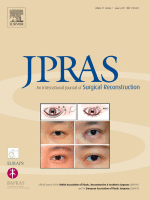 The majority of studies assessing the rupture rate of breast implants were performed by the breast implant manufacturing industry with questionable independence. After repetitive removals of ruptured implants from the same model, our team decided to assess the rupture rate and the estimated risk thereof for most of the silicone gel–filled implants we have used since they regained market approval in France in 2001.
The majority of studies assessing the rupture rate of breast implants were performed by the breast implant manufacturing industry with questionable independence. After repetitive removals of ruptured implants from the same model, our team decided to assess the rupture rate and the estimated risk thereof for most of the silicone gel–filled implants we have used since they regained market approval in France in 2001.
 Después de la cirugía, las incisiones se suelen cerrar aproximando los bordes con suturas (puntos), grapas, adhesivos (pegamento) o broches. Este proceso ayuda a que los bordes incididos cicatricen juntos y se le llama «cicatrización por primera intención». Esta revisión pertenece a una serie de revisiones Cochrane que investigan las pruebas sobre antisépticos y antibióticos en diferentes tipos de heridas. También se propone presentar pruebas actuales relacionadas con la administración de antisépticos y antibióticos para las heridas quirúrgicas con cicatrización por segunda intención (SWHSI, por sus siglas en inglés).
Después de la cirugía, las incisiones se suelen cerrar aproximando los bordes con suturas (puntos), grapas, adhesivos (pegamento) o broches. Este proceso ayuda a que los bordes incididos cicatricen juntos y se le llama «cicatrización por primera intención». Esta revisión pertenece a una serie de revisiones Cochrane que investigan las pruebas sobre antisépticos y antibióticos en diferentes tipos de heridas. También se propone presentar pruebas actuales relacionadas con la administración de antisépticos y antibióticos para las heridas quirúrgicas con cicatrización por segunda intención (SWHSI, por sus siglas en inglés).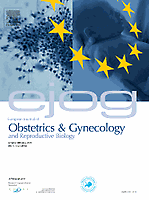 Autologous fat grafting (AFG) or lipofilling is nowadays a popular technique for breast reconstruction after breast cancer surgery. There is debate regarding the oncological safety and risks of this procedure in breast cancer patients. A systematic review of the literature published between January first 1995 and October first 2016 was conducted regarding the efficacy, safety and complications of this technique in breast cancer patients after their cancer treatment.
Autologous fat grafting (AFG) or lipofilling is nowadays a popular technique for breast reconstruction after breast cancer surgery. There is debate regarding the oncological safety and risks of this procedure in breast cancer patients. A systematic review of the literature published between January first 1995 and October first 2016 was conducted regarding the efficacy, safety and complications of this technique in breast cancer patients after their cancer treatment.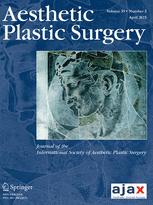 Fingertip reconstruction using reverse-flow homodigital island flaps has been very popular over the years. However, the outcomes of reconstruction have not been clearly understood. In these circumstances, a systematic review of available literature is warranted. A PubMed [MEDLINE] electronic database was searched (1985 to 15 April 2015).
Fingertip reconstruction using reverse-flow homodigital island flaps has been very popular over the years. However, the outcomes of reconstruction have not been clearly understood. In these circumstances, a systematic review of available literature is warranted. A PubMed [MEDLINE] electronic database was searched (1985 to 15 April 2015).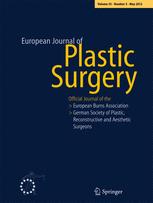 Local skin flaps are used to close defects adjacent to the donor site. They are classified according to their method of movement: flaps that advance from its base to the defect (V-Y, Y-V, single-pedicle, and bipedicle advancement flaps) and flaps that move on a pivot point (rotation, transposition, and interpolation flaps). Despite its frequent use, there is not a unique name for V-Y rotation advancement flap; moreover, there is not a flap class called “rotation advancement” in the textbooks. A systematic review of the literature was conducted using “PubMed” and “Google Scholar” in December 2013.
Local skin flaps are used to close defects adjacent to the donor site. They are classified according to their method of movement: flaps that advance from its base to the defect (V-Y, Y-V, single-pedicle, and bipedicle advancement flaps) and flaps that move on a pivot point (rotation, transposition, and interpolation flaps). Despite its frequent use, there is not a unique name for V-Y rotation advancement flap; moreover, there is not a flap class called “rotation advancement” in the textbooks. A systematic review of the literature was conducted using “PubMed” and “Google Scholar” in December 2013.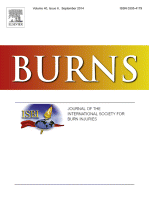 The objective of this review was to systematically examine whether there is clinical evidence to support recommendations for positioning patients with acute burn. Review of the literature revealed minimal evidence-based practice regarding the positioning of burn patients in the acute and intermediate phases of recovery. This manuscript describes recommendations based on the limited evidence found in the literature as well as the expert opinion of burn rehabilitation specialists. These positioning recommendations are designed to guide those rehabilitation professionals who treat burn survivors during their acute hospitalization and are intended to assist in the understanding and development of effective positioning regimens.
The objective of this review was to systematically examine whether there is clinical evidence to support recommendations for positioning patients with acute burn. Review of the literature revealed minimal evidence-based practice regarding the positioning of burn patients in the acute and intermediate phases of recovery. This manuscript describes recommendations based on the limited evidence found in the literature as well as the expert opinion of burn rehabilitation specialists. These positioning recommendations are designed to guide those rehabilitation professionals who treat burn survivors during their acute hospitalization and are intended to assist in the understanding and development of effective positioning regimens.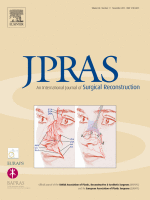 Mastectomy and breast reconstruction are essential parts of the treatment of breast cancer. Acellular dermal matrices (ADMs) have been used for the reconstruction of the lower pole due to many advantages; however, its cost is seen as a major drawback in this era of concern for the allocation of health-care funds. Recently, polyglactin 910 (Vicryl; Ethicon, Somerville, NJ, USA) mesh has been published as an alternative. We assessed the published literature, in particular investigating for studies that compare Vicryl mesh with ADM.
Mastectomy and breast reconstruction are essential parts of the treatment of breast cancer. Acellular dermal matrices (ADMs) have been used for the reconstruction of the lower pole due to many advantages; however, its cost is seen as a major drawback in this era of concern for the allocation of health-care funds. Recently, polyglactin 910 (Vicryl; Ethicon, Somerville, NJ, USA) mesh has been published as an alternative. We assessed the published literature, in particular investigating for studies that compare Vicryl mesh with ADM.






 Sitio web publicado el
Sitio web publicado el
Los lectores comentan